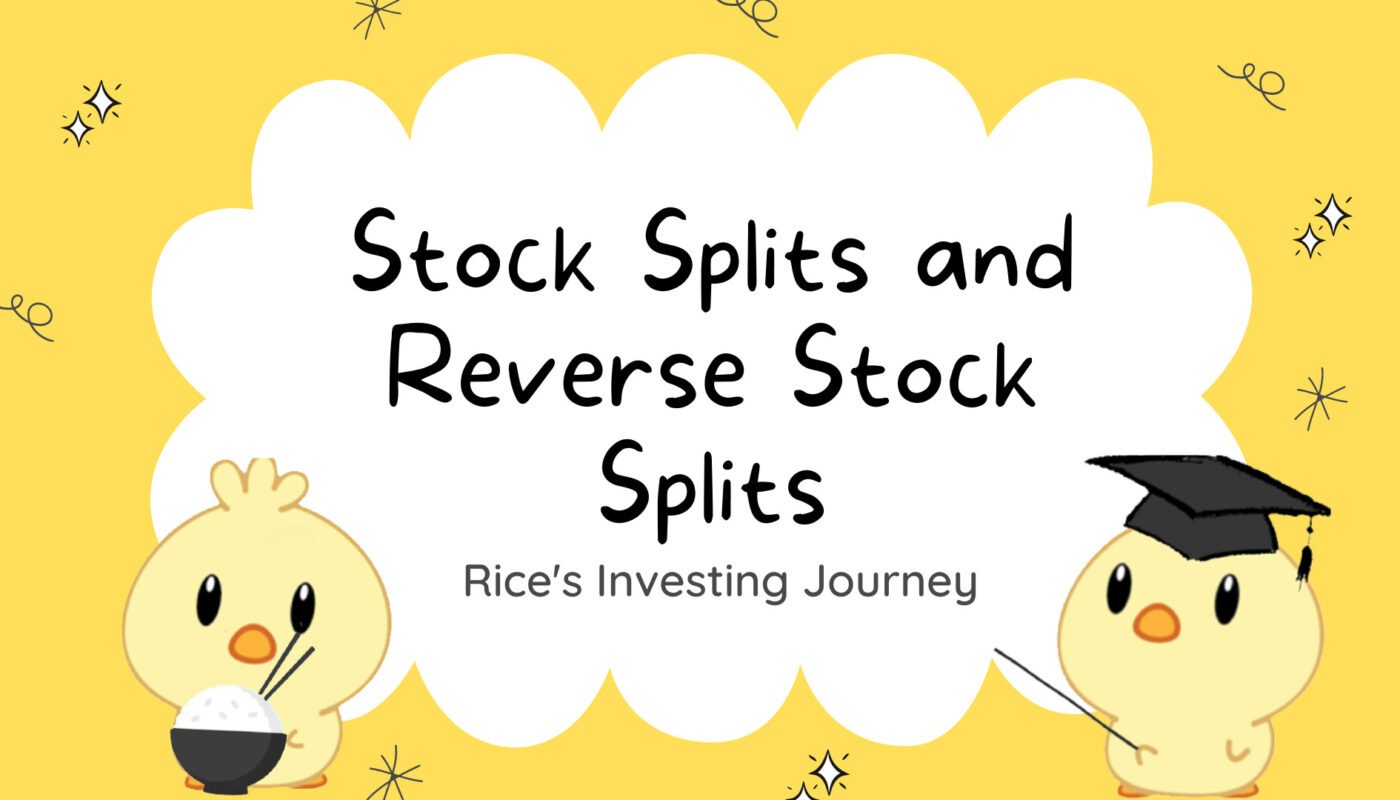What is a stock split?
A stock split is where a company’s shares ‘split’ into many more shares (the new number of shares is depending on the ratio), without changing the market capitalisation (and the value of the company). Most common stock split ratios are usually done 2:1 or 3:1.
Using the example of a stock split ratio of 4:1. It would mean that for every 1 share you own on the record date, you would receive 4 shares post stock split. Although you now own 4 shares, it means that the share price is ¼ of the share price pre-split. Let us look at an example of company ABC doing a 4:1 stock split at a stock price of $200 pre-split. Investor A holds 50 shares pre-split. Here are the changes to the shares of company ABC that investor A holds:
| Company ABC | Pre-Split | Post-Split |
|---|---|---|
| Shares Held | 50 | 200 |
| Share Price ($) | 200 | 50 |
What is a reverse stock split?
Now you might have come across a reverse stock split. What is it? As the name suggests, it is the opposite of a stock split! The reverse stock split merges the shares into larger parts, without a change to the stock’s market capitalisation (and the company’s value).
For example, company XYZ announces a 1-for-10 reverse split with a share price of $10 pre-reverse split. Investor B originally owns 100 shares of company XYZ. Here are the changes to the shares of company XYZ that investor B holds:
| Company XYZ | Pre-Reverse Split | Post- Reverse Split |
|---|---|---|
| Shares Held | 100 | 10 |
| Share Price ($) | 10 | 100 |
Differences between a stock split and a reverse stock split
The main difference between a stock split and a reverse stock split is the number of shares outstanding and the share price.
For a stock split, the number of shares outstanding increases post-split while it decreases post reverse stock split. This also means that the share price post-split decreases, while it increases post reverse stock split.
That said, both a stock split and a reverse stock split do not have an effect on the total market value of the company (and by extension the total value of your shares).
Implications of a stock split
One implication of a stock split is liquidity*. More outstanding shares and lower share prices allow more investors to buy the stock given the lower share price (note that that means they own a smaller portion of the company pre-split and this is for those who are unable to purchase fractional shares) which makes the stock more liquid.
This is especially true for those who plan to buy in lots. Buying in lots allows them to perform various options strategies such as covered calls.
Another implication is the share price gains leading up to a stock split (note that this is speculative and merely based on past stock splits). One example would be when Nvidia (NVDA) announced a 4:1 stock split on 20th July. The runup leading to the stock split (between 21 May and 20 July) saw gains of 24.15%!!!
Lastly, another implication would be for inclusion into a price-weighted index such as the Dow Jones Industrial Average. It has been theorised that Google’s 20:1 stock split is aimed for the stock to be included in the Dow Jones Index. Inclusion in any major index could lead to a stock price surge as funds tracking the index would have to buy shares in that company.
* Liquidity: The efficiency or ease with which an asset or security can be converted into ready cash without affecting its market price. The most liquid asset of all is cash itself.
** Covered Calls: Selling of call options for a premium while you own the underlying shares of the options on a share-for-share basis.
Implications of a reverse stock split
Unlike a stock split, a reverse stock split will lead to reduced outstanding shares and higher share prices, which decreases the stock’s liquidity.
In addition, another major reason for a reverse stock split is to prevent a company from being delisted from the exchange. For example, stocks listed on the NYSE must maintain a minimum share price of $1 or face the risk of being delisted. Hence, such companies may opt to do a reverse stock split to meet listing requirements.
Some may perform a reverse stock split to increase the share price and to make the share seem more ‘valuable’. However, it is important to know that (reverse) stock splits are merely a cosmetic change to the value of the company.
Hope you have found this article useful! If you are wondering which companies are scheduled for (reverse) stock splits, one source you can use is the NASDAQ stock split page. For many of us investors, a stock split should not have a significant impact on our investment decision. That said, for many of us whose brokers do not offer fractional shares, such splits may have a significant impact on our investing decisions. If you have any questions, feel free to leave them in the comments below. Cheers!

-Rice




wow what an insightful post hehe!
Cheers, thank you so much for your support : )